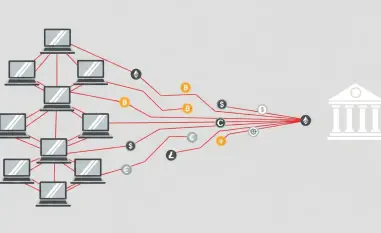Surging as the foremost ransomware threat in 2025, Qilin ransomware, also known as Agenda, revealed its frighteningly sophisticated nature with 72 data leak disclosures. Operational since July 2022, Qilin has revolutionized its approach by adopting the NETXLOADER, a .NET-based loader that enables the stealthy infiltration of systems. This evolution has posed critical challenges to cybersecurity measures, making virtual and physical defenses less effective.
The Evolution and Threat of Qilin Ransomware
Qilin’s metamorphosis into a potent ransomware threat is highlighted by its increasing dominance since its significant emergence in mid-2022. Central to this research is understanding how the ransomware adapts to bypass existing defenses. Key questions focus on the mechanisms employed by Qilin to undermine security systems and the broader implications of its activities on global cybersecurity infrastructures.
Background and Significance
The background of this research emphasizes the escalation of ransomware operations and their shifting tactics. With a marked increase in data leak disclosures, the significance of studying Qilin’s methods cannot be understated. This research illuminates Qilin’s impact across various critical sectors, including healthcare, technology, and financial services, affecting countries like the U.S. and the Netherlands. By deepening the understanding of Qilin’s activities, researchers and practitioners in the cybersecurity field can develop more robust strategies to counteract these threats.
Research Methodology, Findings, and Implications
Methodology
The research employed advanced forensic analysis and threat intelligence-gathering techniques to dissect Qilin’s operations. Tools such as malware analysis platforms and network monitoring solutions were critical in understanding how the NETXLOADER tool functions. The study’s methodology was heavily focused on unraveling the obfuscation techniques and analyzing deployment mechanisms to offer insight into the ransomware’s strategy.
Findings
The findings reveal that Qilin’s utilization of NETXLOADER represents a considerable advancement in ransomware deployment. This highly obfuscated loader facilitates the delivery of other malicious components, such as SmokeLoader and Agenda ransomware. The specific techniques, including JIT hooking and control flow obfuscation, allow the ransomware to evade standard detection systems, emphasizing a sophisticated evolution. Qilin’s rise to prominence following the disbandment of RansomHub, alongside an influx of affiliates, marks a pivotal moment in ransomware history.
Implications
The implications of these findings underscore a significant shift in the cybersecurity landscape. The continuous evolution of Qilin ransomware necessitates enhanced security measures, particularly in sectors highly vulnerable to such threats. Theoretical implications also include the need for advancements in detection technologies to combat increasingly complex ransomware tactics. Societally, the findings prompt urgent action to fortify defenses and prevent further disruptions across critical infrastructure.
Reflection and Future Directions
Reflection
Reflecting on the research process, challenges such as the sheer complexity of Qilin’s obfuscation techniques were encountered. Overcoming these obstacles required a combined effort in both technical and analytical approaches. While the study offers valuable insights into Qilin’s current tactics, it highlights limitations in the scope of understanding future evolutions within the ransomware landscape.
Future Directions
Future research should delve deeper into the predictive modeling of Qilin’s potential tactics and explore new detection technologies. Many questions remain unanswered regarding Qilin’s strategic partnerships and how these could further influence its capabilities. Researchers should consider exploring cross-sector collaboration to bolster the global cybersecurity posture against this formidable adversary.
Conclusion
In conclusion, Qilin ransomware’s sophisticated use of the NETXLOADER establishes it as a severe threat to cybersecurity defenses. The research highlights significant challenges posed by its advanced obfuscation methods and growing affiliate base. Moving forward, continued vigilance and innovation in security technology will be paramount in mitigating Qilin’s threats and preparing for potential future developments in ransomware activities.













